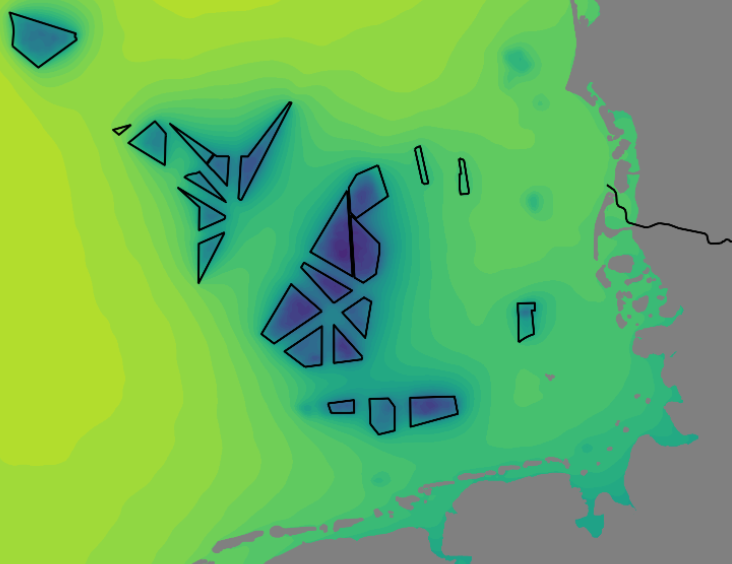Update to Site Development Plan for the German North Sea and Baltic Sea: Fraunhofer IWES awarded contract by BSH
Fraunhofer IWES has been commissioned by the BSH to "Further develop the framework conditions for planning offshore wind turbines and grid connection systems" and advises the BSH on scientific and technical issues related to the update of the FEP.
Bremerhaven, November 2021. The Federal Maritime and Hydrographic Agency (BSH) has been compiling the Site Development Plan (FEP) for wind turbines in the North Sea and Baltic Sea since 2019, updating it continuously in the subsequent years. Achievement of the expansion goal of 40 gigawatts (GW) of offshore wind energy by 2040 now requires a further update to the FEP. The Fraunhofer Institute for Wind Energy Systems IWES was awarded the contract for “Further Development of the Framework Conditions for the Planning of Offshore Wind Turbines and Grid Connection Systems” and has now been advising the BSH on scientific and technical matters regarding the update to the FEP since mid-September.
The expansion goals for offshore wind energy were increased in 2020 with the Federal Government’s decision to amend the German Offshore Wind Energy Act (WindSeeG). The target is now to expand the capacity to 20 GW by 2030 followed by 40 GW by 2040. This move cemented the key role of offshore wind energy in achieving Germany’s climate goals by 2050 and the guaranteed 65 percent share of renewable energies in gross electricity consumption over the next decade. To ensure that the expansion goals can be implemented in the best possible way, the Federal Government has commissioned the BSH to plan the required sites in the North Sea and Baltic Sea as efficiently as possible. Together with the Grid Development Plan (NEP), the FEP establishes the planning basis for the Federal Network Agency’s tendering process.
The FEP is updated continuously and comprehensively as the technical requirements on offshore wind turbines and grid connection systems increase. Alongside spatial planning requirements, there are also the associated environmental impacts to be considered. These are joined by the constantly advancing technical development of wind turbines and grid connections.
High planning security requires detailed knowledge of technical and economic developments in the offshore wind energy sector, which is precisely where Fraunhofer IWES comes in, as the institute’s many scientists and academics involved in the project impart a broad spectrum of expertise. The primary focus is a qualitative and quantitative assessment of the technologies to be employed at the sites in the future, for example, in the areas of grid connection systems or foundation structures, but also includes estimates regarding the dismantling of wind farms and their potential for repowering in the future. “We were delighted to receive the BSH contract. Our wide spectrum of scientific expertise will allow us to provide the BSH with optimal support for the update of the Site Development Plan. In particular, the detailed simulations of the future wind supply in the German Bight, which take the wake effects of wind farms on each other into account, will permit far more precise planning than was previously possible,” explaines Dr. Martin Dörenkämper, research associate at Fraunhofer IWES. Dr.-Ing. Tobias Meyer, Group Leader at Fraunhofer IWES, adds: “We are exploring the whole system under different techno-economic scenarios, with seven of our research departments already involved in the project. This allows us to offer comprehensive consultancy services from a single source.” The two Fraunhofer IWES experts are jointly responsible for the coordination of the research project.
The consultancy work is set to continue until the end of 2022 and will also include workshops for discussion of the results.
Last modified:
